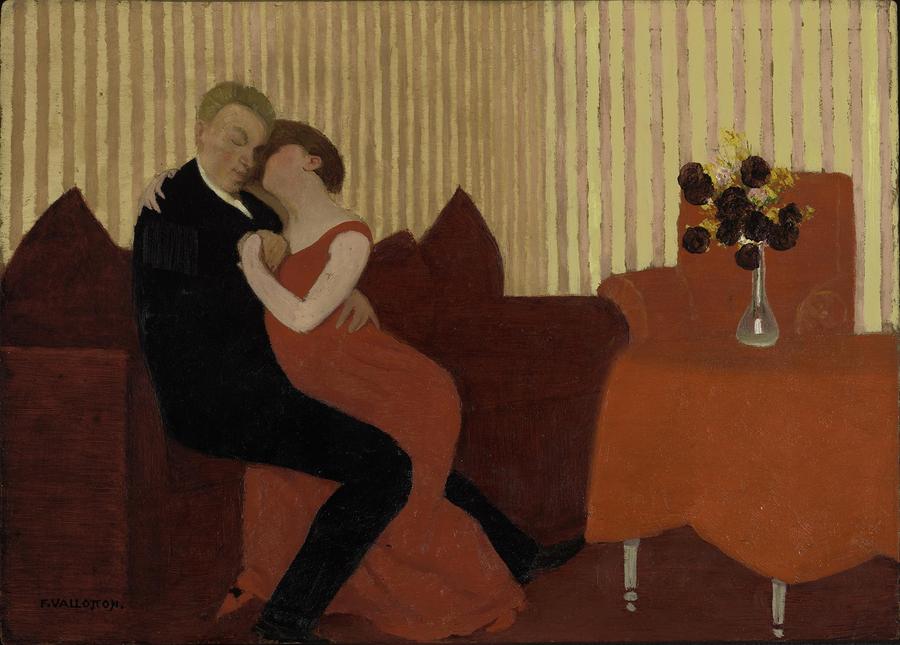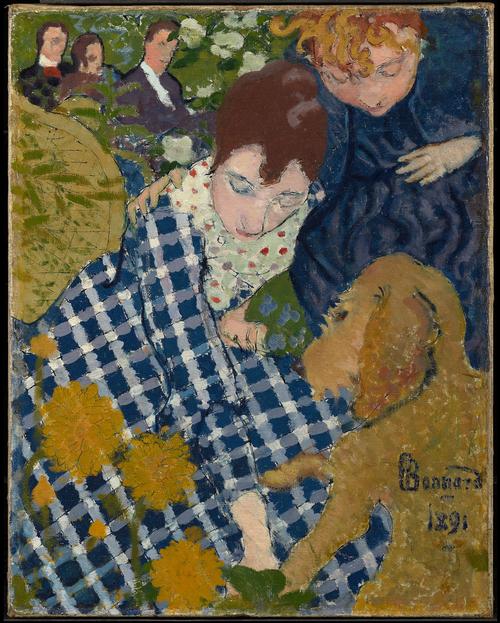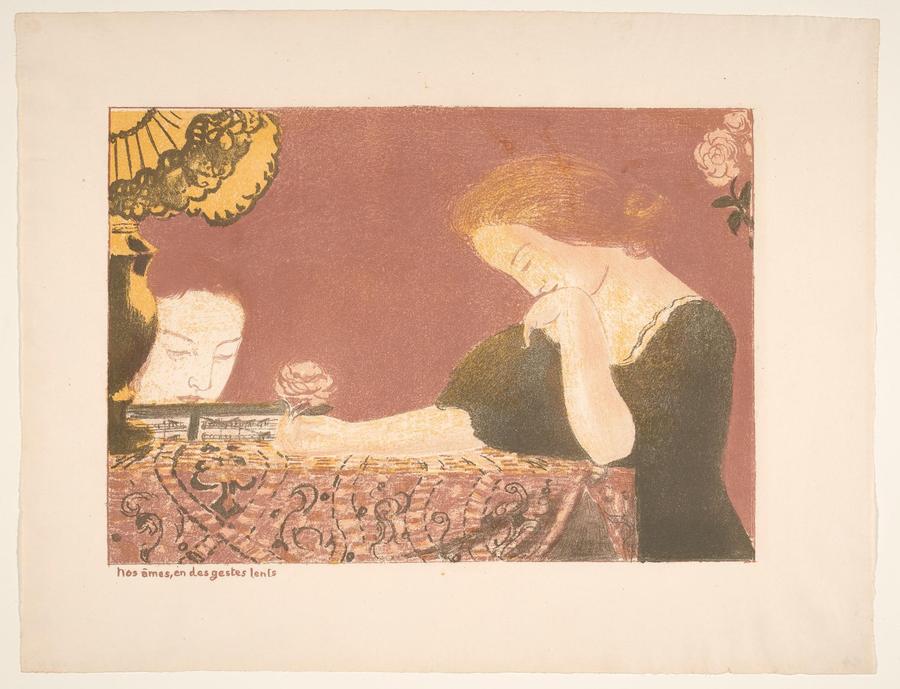through September 19, 2021
Portland Art Museum, Portland, Oregon
October, 2021

In 1889, a small group of avant-garde artists in Paris formed a brotherhood to promote a radical new direction in art. Adopting the name Nabis—Hebrew for “prophets”—they shifted away from the Impressionist style, which sought to capture the fleeting effects of nature, and instead aimed to depict subjective experience and emotion in their paintings, prints and drawings. Private Lives: Home and Family in the Art of the Nabis, Paris, 1889–1900 is the first exhibition to focus on intimate views of home and family by four Nabi artists: Pierre Bonnard (1867–1947), Maurice Denis (1870–1943), Félix Vallotton (1865–1925) and Édouard Vuillard (1868–1940). Loans from museums including the National Gallery of Art, Washington, DC; the Metropolitan Museum of Art, NYC; the Museum of Modern Art, NYC; the Museum of Fine Arts, Boston; the Musée d’Orsay, Paris; the Petit Palais, Paris; the National Gallery of Ireland; and the Van Gogh Museum, Amsterdam, as well as private collections in the US and Europe, enrich the exhibition. More than 40 paintings and 110 works on paper are included in the show.

Private Lives: Home and Family in the Art of the Nabis, Paris, 1889–1900 is organized by the Cleveland Museum of Art (CMA) and the Portland Art Museum. It is on view now at the CMA to September 19, 2021, before heading to Portland, Oregon, in October.
“Private Lives is our first major international loan exhibition since the pandemic began,” said William M. Griswold, director of the CMA. “It explores the humble subjects that resonated most with four important Post-Impressionist artists: quiet interiors, family, scenes of children and pets playing in gardens and parks and Paris city life.”
Private Lives examines depictions of home, family and children, or what Bonnard referred to as the small pleasures and “modest acts of life.” Throughout their formative years in the 1890s, these four artists were deeply entwined in each other’s lives; Bonnard, Vuillard and Denis shared a studio, and Swiss-born Vallotton became a close associate of all three. Although their styles varied, each returned repeatedly to the motifs of homelife, romantic love and family. The Nabis’ art was both of the home and for the home; their domestically scaled works of art were intended to be lived with, enabling the viewer to revisit a single moment laden with emotion and memory.
The domestic world was not always what it seemed; suppressed secrets, hidden affairs and familial tension lie beneath the surface, challenging the viewer to construct the unspoken narrative of these small but powerful images. Glimpses of close family life can simultaneously suggest claustrophobic confinement and unease. The artists depicted their family and friends, but often abstracted or obscured their loved ones so that they were recognizable to only a few viewers. Although the Nabis referenced their own private lives, their art ultimately suggests depths of feeling, memory, nostalgia, joy and melancholy that are universal.
“Domestic life is at the core of the Nabis’ worldview, and Private Lives delves deeply into this subject as the artists’ source of inspiration,” said Heather Lemonedes Brown, the Virginia N. and Randall J. Barbato Deputy Director and Chief Curator. “To these four Post-Impressionists, emotion and subjective experience were more important than verisimilitude. The exhibition prompts visitors to interpret the works of art and draw their own conclusions.”

The exhibition consists of five sections that take viewers through the themes of the artists’ work.
The Intimate Interior / The Troubled Interior
Nabi interiors are celebrated for their intimate views of domestic comforts, but these artists used the same signifiers of cozy life—snug salons, lamplit activities and animated wallpaper—to hint at the discontents simmering below the surface. Portraits are generalized to the point of anonymity, impassable flatness and pattern block the visual penetration of the rooms and figures emerge from and disappear in the shadows. Artful distortions of scale keep the viewer off-balance, while ambiguity invites completion of the narrative.

Family Life
Family life occupied a central role in the Nabis’ art. Their imagery depicting families allowed them to explore romantic love, maternal affection and the joys of childhood. But far from being a sentimental retreat for the artists, these images of family life also offered an opportunity to examine nuance, conflict and grief.
Music chez soi
Music and musicality played a crucial role in the Nabi aesthetic from the time of the group’s inception. In the late 1800s, music and painting were often considered sister arts, both evoking emotions through harmony, rhythm and form. Each artist in this exhibition depicted music in the home, expressing a wide variety of moods and emotions, ranging from the refined musical soirée captured by Vallotton in The Symphony to Bonnard’s playful designs for a children’s music primer to Vuillard’s contemplative portrayal of Misia Natanson at the piano.

Selections from composer Claude Terrasse’s Petites scènes familières (Familiar Little Scenes) performed by pianist and composer Arseniy Gusev can be heard in this gallery. In 1895, Terrasse published a suite of piano compositions illustrated with lithographs by his brother-in-law, Bonnard, to suggest the mood for each song, ranging from lively to melancholic.
In the Garden
The garden played an important role in the personal lives and the art of Bonnard, Denis and Vuillard. The orchard and gardens of Le Clos (the Orchard), the Bonnard family home in Le Grand-Lemps in southeastern France, were a retreat and regular subject for the artist throughout his Nabi years. Denis frequently turned to the garden at his home in Saint-Germain-en-Laye, northwest of Paris, as a theme in his art. Although the urbanite Vuillard never had his own garden, he painted those of his friends. Nabi gardens were outdoor living spaces inhabited by family, friends and pets.
The Nabi City
The Nabi artists were deeply invested in depicting family life in domestic interiors and private gardens. However, the city of Paris appeared frequently in the work of Bonnard and Vuillard during the 1890s. The art in this gallery reflects the artists’ aims to establish a dialogue between public and private life, to domesticize the glittering City of Lights and to bring the city into the realm of the home.